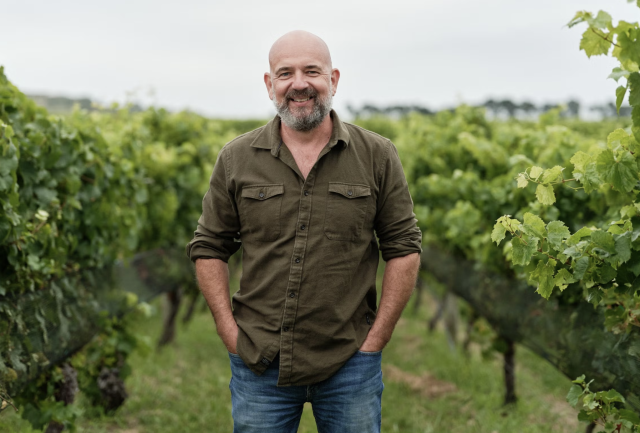Why it may be time to define a Hawke’s Bay blend
By Patrick SchmittAt an event in Shanghai earlier this month featuring the wines of New Zealand’s Church Road, it was suggested that Hawke’s Bay might come up with its own region-specific varietal blend. Patrick Schmitt MW reports.

Headed by the producer’s chief winemaker Chris Scott (pictured), the event showcased a range of Church Road wines, from its outstanding Chardonnays to a first-rate single vineyard Merlot, as well as impressive Malbec, very fine Syrah, and then its range-topping red blend, which combines Cabernet and Merlot, with a touch of Malbec.
Speaking about the latter wine, which hailed from the 2019 vintage, Scott said that creating the ideal combination of wines, which come from different vineyards and grape varieties, was a painstaking process.
“It takes us about a week to blend this wine, and there are always surprises,” he said, commenting that just 0.5% Malbec in the 2019 vintage “has a huge influence”, despite representing such a “small component.”
He added, “We make wine like chefs, and we are trying to make best wine we can based on our evaluation of the structure, aroma and flavours of the components: Merlot brings plummy fruit and a lush round mid-palate, while Cabernet Sauvignon brings length and more fragrance to the blend.”
Continuing he said, “Our Bordeaux blends are the most challenging wines we make, but there is a synergy between these grapes, which means, if you get it right, the whole is greater than the sum of its parts.”
At this point, one of the attendees at the masterclass, Fongyee Walker MW, with a touch of light humour, piped up to correct Scott, commenting, “When you say Bordeaux blends, you really mean Hawke’s Bay blends.”
Although it was meant in jest, I asked Scott why he did not in fact come up with a signature regional blend that could be used to promote the wines of Hawke’s Bay, and if so, bearing in mind the quality of the Syrah from the region, whether he might in fact blend this Rhône variety with the Bordeaux grape of Cabernet Sauvignon – a combination that is fairly common and successful in Australia.
Partner Content
Scott was quick to respond, telling the attendees that he has in fact “played about in my kitchen” blending the Church Road Syrah with its wines based on Bordeaux varieties.
“It’s really good,” he said of the result, which involved him doing nothing more than mixing the wines in a glass at home.
He added, “It’s quite possible that we will do this in the winery, and although I don’t know under what label, we do make exclusives for selling at our cellar door – and it’s a good testing ground.”
As for making Syrah and Cabernet the flagship Hawke’s Bay blend, Scott appeared open to the idea.
“I like the idea of a Hawke’s Bay blend breaking from the traditions of the Old World and combining the best grapes in our region – so why not?” he commented.
“It’s definitely something topical at the moment, and something we will look at in the next round of blending with our 2024 reds,” he concluded on the subject.
So, should the emblematic red blend of Hawke’s Bay become Cabernet-Syrah, you can trace it to a discussion that took place in November 2024 in Shanghai, as well as of course, a Church Bay winemaker’s kitchen-table experiments.
Related news
Hawke's Bay vintners elated over 'legendary' vintage
Hawke's Bay rebounds with 'exceptional vintage' after cyclone
Crown Jewels: how Church Road is putting Hawke's Bay on the fine wine map




